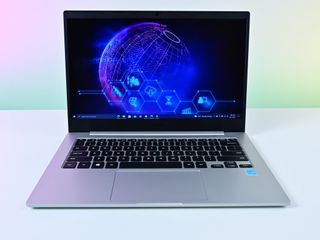Check out the first glimpse of ray tracing on Samsung's Exynos chipset with RDNA 2
It's only a still image, but we now have our first glimpse of ray tracing on an Exynos chipset.

What you need to know
- Samsung shared an image illustrating ray tracing on an Exynos chipset with RDNA 2 graphics.
- The still photo shows a side-by-side comparison of images with and without ray tracing enabled.
- AMD and Samsung announced a partnership at Computex 2021 to create an Exynos chip based on AMD's RDNA 2 architecture.
AMD announced that it's working with Samsung to create an Exynos chip for mobile devices based on the RDNA 2 architecture at Computex 2021. It's been around four months since that announcement, and we now have our first glimpse of ray tracing on a device powered by an Exynos GPU. Samsung shared a photo showing a side-by-side comparison of gameplay with and without ray tracing (via Ice Universe on Twitter).
The photo from Samsung only shows a still image of gameplay with ray tracing. As ray tracing is computationally intensive, a video would do a better job demonstrating ray tracing. A still image doesn't indicate what framerate the game was running at or how smooth gameplay looked.

As for the image itself, it shows flames reflecting off the bottom of a tank. Light also reflects off of some other elements within the image, including the building in the background of the shot. A car appears on the image created with a device running an Exynos GPU while the same car does not appear in the other photo.
In addition to supporting ray tracing, the next-generation Exynos SoC (system-on-a-chip) will support variable rate shading. This feature shades certain parts of a frame differently, allowing systems to allocate less resources to unimportant parts of an image. As a result, more processing power can be used to improve the performance of the core aspects of a game.
Many of the best graphics cards support ray tracing and variable rate shading, so it's important for AMD and Samsung's partnership to create a system that supports these as well.
Get the Windows Central Newsletter
All the latest news, reviews, and guides for Windows and Xbox diehards.

Sean Endicott is a tech journalist at Windows Central, specializing in Windows, Microsoft software, AI, and PCs. He's covered major launches, from Windows 10 and 11 to the rise of AI tools like ChatGPT. Sean's journey began with the Lumia 740, leading to strong ties with app developers. Outside writing, he coaches American football, utilizing Microsoft services to manage his team. He studied broadcast journalism at Nottingham Trent University and is active on X @SeanEndicott_ and Threads @sean_endicott_.